Cable & Wire | High quality and excellent service at reasonable prices.
info@zion-communication.com
| Fiber Cable Type | Minimum Bend Radius |
| G652D | 30mm |
| G657A1 | 10mm |
| G657A2 | 7.5mm |
| B3 | 5.0mm |
Class | Strength member | Structural features | Sheath | Outer sheath | Fibre type |
GY-Outdoor | (void)-metallic | D-Fibre ribbon | Y-PE Sheath | 33-Steel wires armor+PE | B1-G652 |
GL-Micro trench | F-FRP | G-Slotted core | A-Aluminum Tape+PE | 53-Steel tape armor+PE | B1.3-G652D |
GP-Sewer | H-Aramid yarns | X-Uni-tube | S-Steel tape+PE | 54-Steel tape armor+PE+nylon sheath | B4-G655 |
G-Glass fibre yarns | T-Compound Filled | W-Steel tape+PE+2Steel wires | 63-Glass fibre yarn armor+PE | B6-G657 | |
A-Aramid yarns | (void)-Dry water blocking | F-Glass fibre tape+PE | 333-Double steel wire armor+PE | B6a2-G657A2 | |
C-Self-supporting | A1a-50/125μm | ||||
Z-Flame-retardant | A1b-62.5/125μm | ||||
B-Flat shape | |||||
8-Figure 8 |
Class | Strength member | Structural features | Sheath | Fibre type |
GJX-Indoor Wiring | (void)-metallic | D-Fibre ribbon | H-LSZH | B6-G657 |
GJYX-Outdoor Drop | F-FRP | C-Self-supporting | B6a2-G657A2 |
Class | Application Scope | Strength member | Structural features | Sheath | Fibre type |
GJ-Indoor | B-Branch | F-Non Metallic | J-Tigh buffer | H-LSZH | B1.3-G652D |
P-Bundle | B-Flat shape | V-PVC | B4-G655 | ||
D-Ribbon | U-PU | B6-G657 | |||
B6a2-G657A2 |
| Type | FTTH | Metropolitan Area Network | Backbone Network | ||||||||||
|
| Drop | Distribution | Feeder | ||||||||||
|
| Duct | Aerial | S-S | Duct | Aerial | S-S | U-W | Buried | Aerial | S-S | U-W | ||
| ADSS-SJ |
| √ |
|
| √ |
|
| √ |
|
|
| √ |
|
| ADSS-DJ |
| √ |
|
| √ |
|
| √ |
|
|
| √ |
|
|
|
|
|
|
|
|
|
|
|
|
|
|
|
|
| GJXH | √ |
|
|
|
|
|
|
|
|
|
|
|
|
| GJXFH | √ |
|
|
|
|
|
|
|
|
|
|
|
|
| GJYXCH | √ |
|
|
| √ |
|
|
|
|
|
|
|
|
| GJYXFCH | √ |
|
|
| √ |
|
|
|
|
|
|
|
|
| GJXDH | √ |
|
|
|
|
|
|
|
|
|
|
|
|
| GJXFDH | √ |
|
|
|
|
|
|
|
|
|
|
|
|
| GJYXDCH | √ |
|
|
|
|
|
|
|
|
|
|
|
|
| GJYXFDCH | √ |
|
|
|
|
|
|
|
|
|
|
|
|
| GJYXFHA | √ |
| √ | √ |
|
|
|
|
|
|
|
|
|
| GJYXFHS | √ |
| √ | √ |
|
|
|
|
|
|
|
|
|
| GJYXFH53 | √ |
| √ | √ |
|
|
|
|
|
|
|
|
|
|
|
|
|
|
|
|
|
|
|
|
|
|
|
|
| GYTA |
|
| √ | √ |
| √ | √ |
|
|
| √ |
|
|
| GYTS |
|
| √ | √ |
| √ | √ |
|
|
| √ |
|
|
| GYFS |
|
| √ | √ |
| √ | √ |
|
|
| √ |
|
|
| GYTY53 |
|
| √ |
|
| √ |
|
|
| √ |
|
|
|
| GYFY53 |
|
| √ |
|
| √ |
|
|
| √ |
|
|
|
| GYTS54 |
|
| √ | √ |
| √ | √ |
|
|
| √ |
|
|
| GYTA53 |
|
| √ |
|
| √ |
|
|
| √ |
|
|
|
| GYTS53 |
|
| √ |
|
| √ |
|
|
| √ |
|
|
|
| GYTA33/333 |
|
| √ |
|
| √ |
|
| √ |
|
|
| √ |
| GYTS33/333 |
|
| √ |
|
| √ |
|
| √ |
|
|
| √ |
| GYTA53+33/333 |
|
| √ |
|
| √ |
|
| √ |
|
|
| √ |
|
|
|
|
|
|
|
|
|
|
|
|
|
|
|
| GYFTY |
|
| √ | √ |
| √ | √ |
|
|
| √ |
|
|
| GYFTA(S) |
|
| √ | √ |
| √ | √ |
|
|
| √ |
|
|
| GYFTY63 |
|
| √ | √ | √ | √ | √ | √ |
|
| √ |
|
|
| GYFY63 |
|
| √ | √ | √ | √ | √ | √ |
|
| √ |
|
|
| GYFTA53 |
|
| √ |
|
| √ |
|
|
| √ |
|
|
|
| GYXTY |
|
| √ | √ |
| √ | √ |
|
|
| √ |
|
|
| GYFXTY |
|
| √ | √ |
| √ | √ |
|
|
| √ |
|
|
| GYXTW |
|
| √ | √ |
| √ | √ |
|
|
| √ |
|
|
| GYDTA |
| √ | √ | √ |
| √ | √ |
|
|
| √ |
|
|
| GYDXTW |
| √ | √ | √ |
| √ | √ |
|
|
| √ |
|
|
| GYTC8A(S) |
|
|
|
| √ |
|
|
|
|
|
| √ |
|
| GYFTC8A(S) |
|
|
|
| √ |
|
|
|
|
|
| √ |
|
| GYFC8Y |
|
|
|
| √ |
|
|
|
|
|
| √ |
|
| GYFC8Y53 |
|
|
|
|
|
|
|
|
|
|
| √ |
|
| GYXTC8A(S) |
|
|
|
| √ |
|
|
|
|
|
| √ |
|
| Dielectric Single Jacket ADSS | 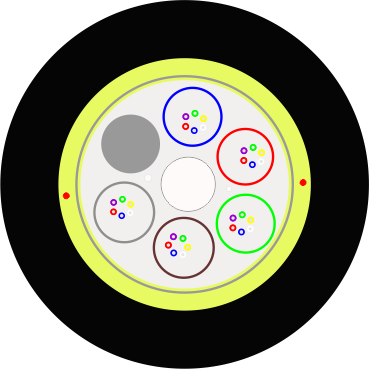 | |||||||||||||
| NO. | NAME | |||||||||||||
| ADSS-SJ-80 | Single Jacket ADSS G.652D span 80m | |||||||||||||
| ADSS-SJ-100 | Single Jacket ADSS G.652D span 100m | |||||||||||||
| ADSS-SJ-120 | Single Jacket ADSS G.652D span 120m | |||||||||||||
| ADSS-SJ-200 | Single Jacket ADSS G.652D span 200m | |||||||||||||
| ADSS-SJ-300 | Single Jacket ADSS G.652D span 300m | |||||||||||||
| Dielectric Double Jacket ADSS | 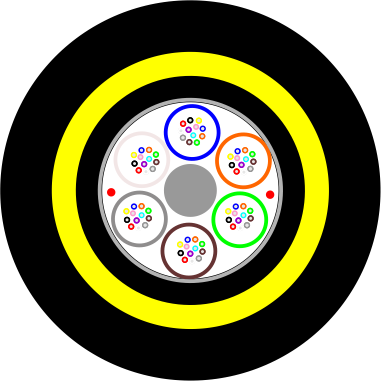 | |||||||||||||
| NO. | NAME | |||||||||||||
| ADSS-DJ-150 | Double Jacket ADSS G.652D span 150m | |||||||||||||
| ADSS-DJ-200 | Double Jacket ADSS G.652D span 200m | |||||||||||||
| ADSS-DJ-300 | Double Jacket ADSS G.652D span 300m | |||||||||||||
| ADSS-DJ-500 | Double Jacket ADSS G.652D span 500m | |||||||||||||
| ADSS-DJ-800 | Double Jacket ADSS G.652D span 800m | |||||||||||||
| (Steel) Self-Supporting Drop Cable | 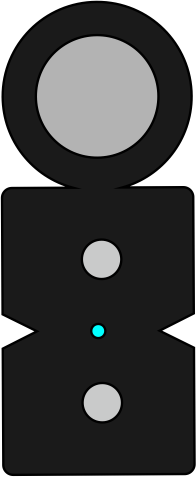 | |||||||||||||
| NO. | NAME | |||||||||||||
| GJYXCH-1 | GJYXCH-1 G657A (Steel) Self-Supporting Drop cable | |||||||||||||
| GJYXCH-2 | GJYXCH-2 G657A (Steel) Self-Supporting Drop cable | |||||||||||||
| GJYXCH-4 | GJYXCH-4 G657A (Steel) Self-Supporting Drop cable | |||||||||||||
| Self-Supporting GFRP Drop Cable | 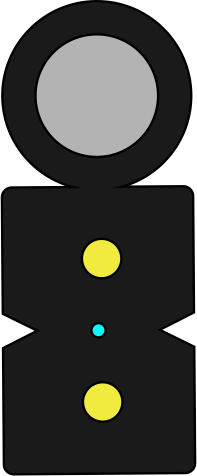 | |||||||||||||
| NO. | NAME | |||||||||||||
| GJYXFCH-1 | GJYXFCH-1 G657A (Steel) Self-Supporting GFRP Drop cable | |||||||||||||
| GJYXFCH-2 | GJYXFCH-2 G657A (Steel) Self-Supporting GFRP Drop cable | |||||||||||||
| GJYXFCH-4 | GJYXFCH-4 G657A (Steel) Self-Supporting GFRP Drop cable | |||||||||||||
| (Steel) Drop Cable |  | |||||||||||||
| NO. | NAME | |||||||||||||
| GJXH-1 | GJXH-1 G657A (Steel) Drop Cable | |||||||||||||
| GJXH-2 | GJXH-2 G657A (Steel) Drop Cable | |||||||||||||
| GJXH-4 | GJXH-4 G657A (Steel) Drop Cable | |||||||||||||
| Unitube Light-armored Cable | 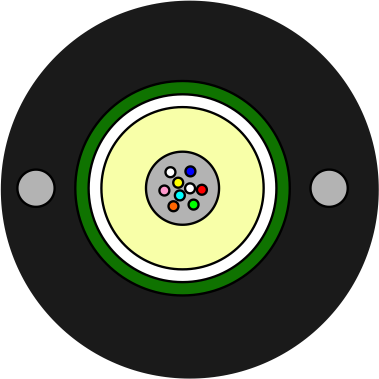 | |||||||||||||
| NO. | NAME | |||||||||||||
| GYXTW-4 | Unitube Light-armored Cable GYXTW 4 cores G.652D | |||||||||||||
| GYXTW-6 | Unitube Light-armored Cable GYXTW 6 cores G.652D | |||||||||||||
| GYXTW-8 | Unitube Light-armored Cable GYXTW 8 cores G.652D | |||||||||||||
| GYXTW-10 | Unitube Light-armored Cable GYXTW 10 cores G.652D | |||||||||||||
| GYXTW-12 | Unitube Light-armored Cable GYXTW 12 cores G.652D | |||||||||||||
| Double Sheathed Cable |  | |||||||||||||
| NO. | NAME | |||||||||||||
| GYXTW53-4 | Double Sheathed Cable GYXTW53 4 cores G.652D | |||||||||||||
| GYXTW53-6 | Double Sheathed Cable GYXTW53 6 cores G.652D | |||||||||||||
| GYXTW53-8 | Double Sheathed Cable GYXTW53 8 cores G.652D | |||||||||||||
| GYXTW53-10 | Double Sheathed Cable GYXTW53 10 cores G.652D | |||||||||||||
| GYXTW53-12 | Double Sheathed Cable GYXTW53 12 cores G.652D | |||||||||||||
| Steel wires Armored Cable | 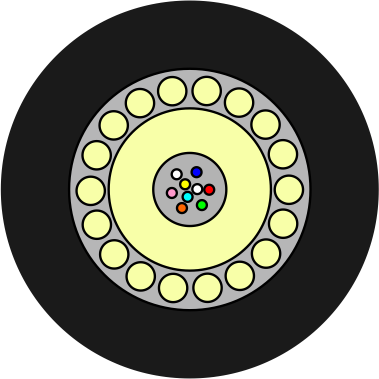 | |||||||||||||
| NO. | NAME | |||||||||||||
| GYFXTY-4 | Steel wires Armored GYXTW53 4 cores G.652D | |||||||||||||
| GYFXTY-6 | Steel wires Armored GYXTW53 6 cores G.652D | |||||||||||||
| GYFXTY-8 | Steel wires Armored GYXTW53 8 cores G.652D | |||||||||||||
| GYFXTY-10 | Steel wires Armored GYXTW53 10 cores G.652D | |||||||||||||
| GYFXTY-12 | Steel wires Armored GYXTW53 12 cores G.652D | |||||||||||||
| Stranded Loose Tube Cable | 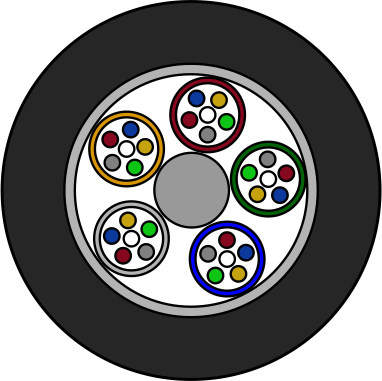 | |||||||||||||
| NO. | NAME | |||||||||||||
| GYTA 2-48 | Stranded Loose Tube Cable GYTA 2-48 cores G.652D | |||||||||||||
| GYTA > 48 | Stranded Loose Tube Cable GYTA > 48 cores G.652D | |||||||||||||
| GYTS 2-48 | Stranded Loose Tube Cable GYTS 2-48 cores G.652D | |||||||||||||
| GYTS > 48 | Stranded Loose Tube Cable GYTS > 48 cores G.652D | |||||||||||||
| GYFTY 2-48 | Stranded Loose Tube Cable GYFTY 2-48 cores G.652D | |||||||||||||
| GYFTY > 48 | Stranded Loose Tube Cable GYFTY > 48 cores G.652D | |||||||||||||
| UG Double Sheathed Cable | 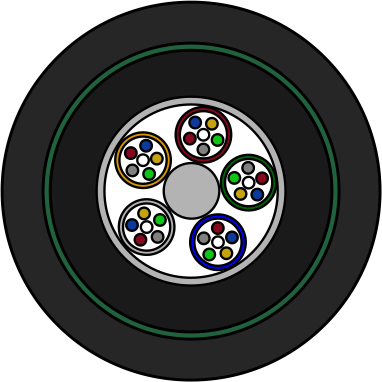 | |||||||||||||
| NO. | NAME | |||||||||||||
| GYTA53 2-48 | UG Double Sheathed Cable GYTA53 2-48 cores G.652D | |||||||||||||
| GYTA53 > 48 | UG Double Sheathed Cable GYTA53 > 48 cores G.652D | |||||||||||||
| GYTS53 2-48 | UG Double Sheathed Cable GYTS53 2-48 cores G.652D | |||||||||||||
| GYTS53 > 48 | UG Double Sheathed Cable GYTS53 > 48 cores G.652D | |||||||||||||
| Figure 8 Cable | 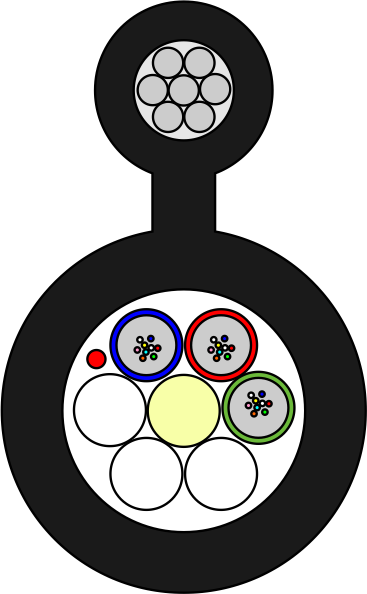 | |||||||||||||
| NO. | NAME | |||||||||||||
| GYXTC-8S | Figure 8 Cable GYXTC-8S 2-6 cores G.652D | |||||||||||||
| GYTC-8S | Figure 8 Cable GYTC-8S G.652D | |||||||||||||
| GYTC-8A | Figure 8 Cable GYTC-8A G.652D | |||||||||||||
| GYTS-8S | Figure 8 Cable GYTS-8S G.652D | |||||||||||||
| GYTA-8S | Figure 8 Cable GYTA-8S G.652D | |||||||||||||
| Fibers Color Standard Sequence | ||||||
| No. | 1 | 2 | 3 | 4 | 5 | 6 |
| Color | Blue | Orange | Green | Brown | Gray | White(Natural) |
| No. | 7 | 8 | 9 | 10 | 11 | 12 |
| Color | Red | Black | Yellow | Violet | Pink | Aqua |
| Tubes Color Standard Sequence | ||||||
| No. | 1 | 2 | 3 | 4 | 5 | 6 |
| Color | Blue | Orange | Green | Brown | Gray | White(Natural) |
| No. | 7 | 8 | 9 | 10 | 11 | 12 |
| Color | Red | Black | Yellow | Violet | Pink | Aqua |
| Tigh Buffer Fibers Color Standard Sequence | ||||||
| No. | 1 | 2 | 3 | 4 | 5 | 6 |
| Color | Blue | Orange | Green | Brown | Gray | White(Natural) |
| No. | 7 | 8 | 9 | 10 | 11 | 12 |
| Color | Red | Black | Yellow | Violet | Pink | Aqua |
| Indoor Fiber Optic Cable Color Standard Sequence |
| Colors of Cable Sheaths comply with YD/T1258 |
| Category | Description |
| G.652.D | G.652.D | G.657.A1 | G.657.A2 | Unit/单位 |
| Transmission | 850nm (multimode optical fiber communication system) | @1310 nm | ≤0.35 | ≤0.34 | ≤0.34 | ≤0.34 | dB/km |
| @1285-1330 nm |
| ≤0.37 | ≤0.37 | ≤0.37 | dB/km | ||
| @1383 nm(after hydrogen aging)氢老化后 (水峰衰减) | ≤0.30 | ≤0.30 | ≤0.31 | ≤0.31 | dB/km | ||
| @1460 nm |
|
|
|
|
| ||
| @1490 nm | ≤0.24 |
| ≤0.23 | ≤0.23 | dB/km | ||
| @1550 nm | ≤0.22 | ≤0.21 | ≤0.2 | ≤0.2 | dB/km | ||
| @1525-1575 nm |
| ≤0.22 | ≤0.21 | ≤0.21 | dB/km | ||
| @1625 nm | ≤0.25 | ≤0.24 | ≤0.22 | ≤0.22 | dB/km | ||
| Mode Field Diameter | @1310 nm | 8.6±0.4 | 9.0±0.4 | 9.0±0.3 | 8.6±0.4 | µm | |
| @1550 nm | 9.8±0.5 | 10.2±0.4 | 10.2±0.4 | 9.6±0.5 | µm | ||
| Cable Cut-off wavelength(λ cc) |
| ≤1260 | ≤1260 | ≤1260 | ≤1260 | nm | |
| Zero Dispersion Wavelength |
| 1300-1324 | 1300-1324 | 1300-1324 | 1300-1324 | nm | |
| Zero Dispersion Slope |
| ≤0.092 | ≤0.092 | ≤0.09 | ≤0.09 | ps/nm²/km | |
| Dispersion Coefficient | @1285-1339 nm |
| ≤3.4 | ≤3 | ≤3.4 | ps/(nm·km) | |
| @1271-1360 nm |
| ≤5.3 |
|
| ps/(nm·km) | ||
| 1525-1575nm |
|
|
|
|
| ||
| 1530-1565nm |
|
|
|
|
| ||
| 1565-1625nm |
|
|
|
|
| ||
| @1550 nm | ≤ 18 | ≤ 18 | ≤ 17 | ≤ 18 | ps/(nm·km) | ||
| @1625 nm | ≤ 22 | ≤ 22 | ≤ 21 | ≤ 22 | ps/(nm·km) | ||
| PMD Maximum Individual Fiber |
| ≤0.1 | ≤0.1 | ≤0.1 | ≤0.1 | ps√km | |
| PMD Link Design Value |
| ≤0.06 | ≤0.06 | ≤0.06 | ≤0.06 | ps/√km | |
| Point Discontinuity | @1310 nm, @1550 nm | ≤0.05 | ≤0.05 | ≤0.05 | ≤0.05 | dB | |
| EGRI | @1310 nm |
| 1.4671 | 1.4671 | 1.4676 |
| |
| @1550 nm |
| 1.4675 | 1.4675 | 1.4683 |
| ||
| @1625 nm |
| 1.468 | 1.468 | 1.4685 |
| ||
| Macro Bending Loss | 10turns of 15mm radius |
|
| ≤0.25 | ≤0.03 | @1550 nm | |
| 100turns of 25mm radius |
|
|
|
| |||
| 1turns of 16mm radius |
|
| ≤0.25 | ≤0.03 | |||
| 1turns of 10mm radius |
|
| ≤0.75 | ≤0.1 | |||
| 1turns of 7.5mm radius |
|
|
| ≤0.2 | |||
| 1turns of 5mm radius |
|
|
|
| |||
| 100turns of 30mm radius | ≤0.05 | ≤0.05 |
|
| @1625 nm | ||
| 100turns of 25mm radius |
|
|
|
| |||
| 10turns of 15mm radius |
|
| ≤1.0 | ≤0.1 | |||
| 1turns of 10mm radius |
|
| ≤1.5 | ≤0.2 | |||
| 1turns of 7.5mm radius |
|
|
| ≤0.5 | |||
| 1turns of 5mm radius |
|
|
|
| |||
| Category | Description |
| G.652.D | G.652.D | G.657.A1 | G.657.A2 | Unit/单位 |
| Dimensions | Cladding Diameter |
| 125±0.7 | 125±0.5 | 125±0.5 | 125±0.5 | µm |
| Core / Cladding Concentricity Error |
| ≤0.5 | ≤0.4 | ≤0.4 | ≤0.4 | µm | |
| Cladding Non-circularity |
| ≤1.0 | ≤0.7 | ≤0.7 | ≤0.7 | % | |
| Coating Diameter |
| 245±5 | 245±5 | 242±5 | 242±5 | µm | |
| Coating / Cladding Concentricity Error涂覆层/包层同心度误差 |
| ≤12 | ≤12 | ≤8 | ≤8 | µm | |
| Mechanical Characteristics | Proof Test | Fiber Strain | ≥1 | ≥1 | ≥1 | ≥1 | % |
| Fiber Load | ≥9 | ≥9 | ≥9 | ≥9 | N | ||
| Stress | ≥100 | ≥100 | ≥100 | ≥100 | kpsi | ||
| Dynamic Stress Corrosion Susceptibility Factor | Unaged &Aged(30 days@85℃,85%R.H.) | ≥20 | ≥20 | ≥20 | ≥20 |
| |
| Coating Strip Force | Peak Value | 1.3-8.9 | 1.3-8.9 | 1.3-8.9 | 1.3-8.9 | N | |
| Fiber Curl |
| ≥4 | ≥4 | ≥4 | ≥4 | m | |
| Environmental Characteristics | Dry heat aging干热(30days@85℃) | @1310 nm, @1550 nm | ≤0.05 | ≤0.05 | ≤0.05 | ≤0.05 | dB/km |
| Accelerated ageing 湿热(30days@85℃,85%R.H.) | @1310 nm, @1550 nm | ≤0.05 | ≤0.05 | ≤0.05 | ≤0.05 | dB/km | |
| Temperature Cycling温度循环 | @1310 nm, @1550 nm | ≤0.05 | ≤0.05 | ≤0.05 | ≤0.05 | dB/km | |
| Water Soak浸水(30days@23℃) | @1310 nm, @1550 nm | ≤0.05 | ≤0.05 | ≤0.05 | ≤0.05 | dB/km |
● Our R&D team and skilled workers together with the advanced machines and modern factories which can provide our customers with outstanding quality, service.
● On the flexibility
● High-quality control standard
● Plenty of Certificates of products and customs
● Professional expert team
● 7/24 working time for you

